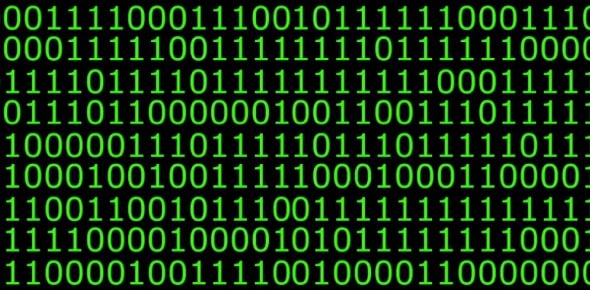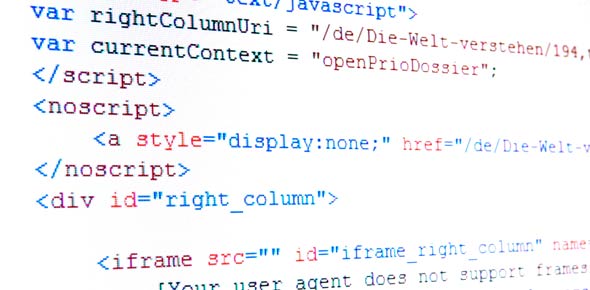ICT Quiz / Data On A Computer- Stored As Strings Of 1s And 0s I.E. Binary Code
-
1000 bytes = ? KB (kilobytes)
-
1000 KB
-
1 KB
-
100 KB
-
10 KB
-
0 KB
-
Explore the basics of data representation in computers with this ICT quiz. Understand bytes, characters, and binary code through practical questions.

Quiz Preview
- 2.
How much is 1 byte equal to?
-
1 bit
-
10 bits
-
8 bits
-
100 bits
-
0 bits
Correct Answer
A. 8 bitsExplanation
A byte is a unit of digital information that consists of 8 bits. Each bit represents a binary value of either 0 or 1. Therefore, 1 byte is equal to 8 bits.Rate this question:
-
- 3.
Generally, people refer to 1000 bytes as a kilobyte, however in reality it is really ? bytes.
-
1500 bytes
-
1999 bytes
-
1024 bytes
-
1100 bytes
-
1010 bytes
Correct Answer
A. 1024 bytesExplanation
The correct answer is 1024 bytes. In computer storage, the binary system is used, where each byte consists of 8 bits. However, in the decimal system, 1 kilobyte is equal to 1000 bytes. This discrepancy between the binary and decimal systems has led to confusion, and many people refer to 1000 bytes as a kilobyte. However, in reality, a kilobyte is technically 1024 bytes, which is why the correct answer is 1024 bytes.Rate this question:
-
- 4.
How much is the capacity of one floppy disk?
-
1 MB
-
1 GB
-
1 KB
-
1.44 MB
-
1.5 GB
Correct Answer
A. 1.44 MBExplanation
The capacity of one floppy disk is 1.44 MB. Floppy disks were a popular storage medium in the past, commonly used to store and transfer small amounts of data. The 1.44 MB capacity refers to the maximum amount of data that could be stored on a standard 3.5-inch floppy disk. This capacity was sufficient for storing documents, images, and small software programs. However, with the advancement of technology, floppy disks have become obsolete and are no longer widely used.Rate this question:
-
- 5.
DVD disks can hold between up to HOW MUCH of data ?
-
1 GB
-
800 bits
-
8 bytes
-
4 GB
-
4.7 GB
Correct Answer
A. 4.7 GBExplanation
DVD disks can hold up to 4.7 GB of data. This is the correct answer because DVDs have a larger storage capacity compared to other options listed. 1 GB, 800 bits, and 8 bytes are all smaller units of data and cannot hold as much information as a DVD. While 4 GB is larger than the other options, 4.7 GB is the most accurate and specific answer as it reflects the typical storage capacity of a standard DVD.Rate this question:
-
- 6.
How much is the capacity of CD ROM disks?
-
600 MB
-
650 MB
-
1000 MB
-
1 GB
-
1 billion keyboard characters
Correct Answer
A. 650 MBExplanation
The capacity of CD ROM disks is 650 MB. This means that the disk can store up to 650 megabytes of data.Rate this question:
-
- 7.
Then how many bytes are there in 1000 keyboard characters?
-
1 byte
-
100 bytes
-
0 bytes
-
10000 bytes
-
1000 bytes
Correct Answer
A. 1000 bytesExplanation
The answer is 1000 bytes because each keyboard character is typically represented by 1 byte of data. Therefore, if there are 1000 keyboard characters, there would be 1000 bytes of data.Rate this question:
-
- 8.
Each number, letter and keyboard symbol is represented by a series of what?
-
MB
-
GB
-
KB
-
8 bits
-
8 bytes
Correct Answer
A. 8 bitsExplanation
Each number, letter, and keyboard symbol is represented by a series of 8 bits. A bit is the smallest unit of information in computing and can have a value of either 0 or 1. By combining 8 bits, which is called a byte, different combinations can be created to represent various characters and symbols. Therefore, the correct answer is 8 bits.Rate this question:
-
- 9.
If 1000 kilobytes = 1 MB (megabyte) how many keyboard characters would this be?
-
1000
-
1
-
1 million
-
1 billion
-
10 000
Correct Answer
A. 1 millionExplanation
If 1000 kilobytes is equal to 1 megabyte, then it means that 1 megabyte is equivalent to 1 million bytes. Since each keyboard character is typically represented by 1 byte of data, 1 million keyboard characters would be equal to 1 megabyte.Rate this question:
-
- 10.
1000 megabytes = 1 GB (gigabyte) or ? characters
-
1
-
1000
-
1 million
-
1 billion
-
10
Correct Answer
A. 1 billion -
- 11.
What is the name of the lowest 'data' level which is a series of 0s and 1s?
-
Bit
-
Byte
-
Keyboard character
-
KB
-
MB
Correct Answer
A. ByteExplanation
A byte is a unit of digital information that consists of a series of 0s and 1s. It is the smallest addressable unit of memory in most computer architectures and is commonly used to represent characters such as letters, numbers, and symbols. A bit, on the other hand, is the smallest unit of data in computing and can only represent a single 0 or 1. Therefore, a byte is the correct answer as it is the lowest level of data that can represent a series of 0s and 1s.Rate this question:
-
- 12.
What does each keyboard character equals to?
-
1 bit
-
8 bits
-
1 byte
-
8 bytes
-
80 bits
Correct Answer
A. 1 byteExplanation
Each keyboard character is equal to 1 byte. A byte is a unit of digital information that consists of 8 bits. Since a bit is the smallest unit of information in computing, 1 byte is the smallest unit that can represent a keyboard character. Therefore, each keyboard character is equivalent to 1 byte.Rate this question:
-
Quiz Review Timeline (Updated): Mar 14, 2023 +
Our quizzes are rigorously reviewed, monitored and continuously updated by our expert board to maintain accuracy, relevance, and timeliness.
-
Current Version
-
Mar 14, 2023Quiz Edited by
ProProfs Editorial Team -
Apr 02, 2009Quiz Created by
Mi6le
Operating System And Binary Code Test
This 'Operating System and Binary Code Test' assesses knowledge in ASCII, binary digit usage, and computer architecture speed. It includes matching binary to decimal numbers,...
Questions:
19 |
Attempts:
644 |
Last updated:
Mar 21, 2023
|
BITS, BYTES & BINARY CODE
For people who know nothing about computers, it can be mind-blowing information to find out that most of what we know about these devices comes down to a series of 1s and...
Questions:
16 |
Attempts:
3566 |
Last updated:
Jul 12, 2024
|
Binary Code First Short Test
Binary code is a coding system using the binary digits 0 and 1 to represent a letter, digit, or other character in a computer or other electronic device. The Binary Code First...
Questions:
5 |
Attempts:
3262 |
Last updated:
Mar 20, 2022
|
What Do You Know About Nimble CRM?
Nimble also known as Nimble storage is a flash storage or predictive flash storage technology created by a company by the same name. The company produces hardware and software...
Questions:
10 |
Attempts:
160 |
Last updated:
Mar 21, 2023
|
What Do You Know About Petabyte?
Petabytes are just a unit of measurement that are prevalent in anything computer. Though, on a scale of one to ten, I doubt it's really that interesting due to its obscurity.a
Questions:
10 |
Attempts:
124 |
Last updated:
Mar 21, 2023
|
What's Exabyte To You?
Think of it as unit used for describing your storage device's capacity. Only, this is much bigger than a Gigabyte like you'll all over. That part done with, how about some...
Questions:
10 |
Attempts:
191 |
Last updated:
Mar 21, 2023
|
 Back to top
Back to top








